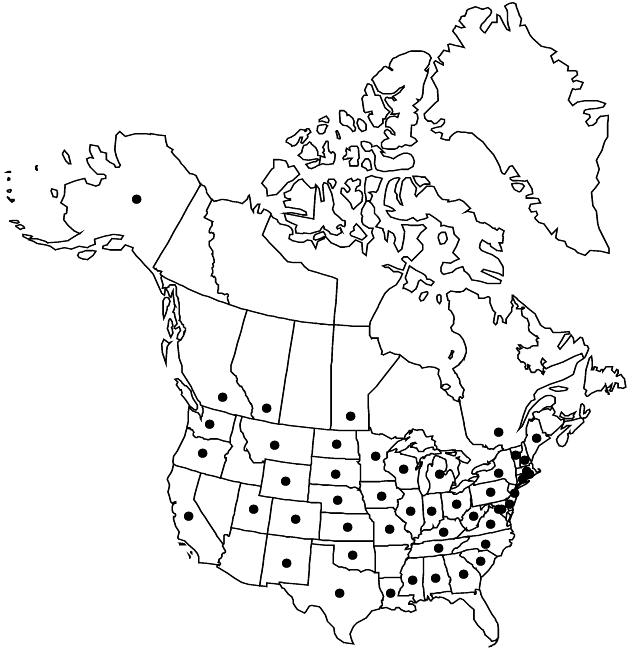Bidens tripartita
Sp. Pl. 2: 831. 1753.
Annuals, (5–) 20–70 (–200) cm. Leaves sessile or petioles 5–15 (–35+) mm (± winged); blades ± elliptic to ovate or lanceolate, 40–80 (–150+) × 15–40 (–60+) mm, sometimes laciniately 1-pinnatisect with 1–4+ lobes near bases, bases cuneate, margins entire or dentate to serrate, usually ciliate, apices acute to acuminate, faces glabrous or hirtellous. Heads borne singly or in 2s or 3s. Peduncles 10–40 (–80) mm. Calyculi of (2–) 6–7 (–10) ± spreading, oblanceolate or lanceolate to linear, ± foliaceous bractlets or bracts 7–35 (–60) mm, margins (entire or serrate) sometimes sparsely ciliate, abaxial faces hispidulous near bases, distally glabrous. Involucres campanulate to hemispheric or broader, (4–) 5–7 (–12) × (3–) 6–12 (–15+) mm. Phyllaries (6–) 7–8 (–13), elliptic-ovate to lanceovate, (4–) 6–9 (–12) mm. Ray-florets usually 0, sometimes 1–5; laminae orange yellowish, 4–8 mm. Disc-florets (5–) 20–60 (–150+); corollas pale-yellow to orange, (2–) 3–4 mm (gradually ampliate, anthers usually pale). Cypselae blackish to purplish or brown, ± flattened, sometimes weakly 3 (–4) -angled, usually cuneate to linear, outer (3–) 6–7 (–10) mm, inner (4–) 6–9 (–11) mm, margins proximally antrorsely to patently, distally retrorsely, barbed, apices ± truncate to concave, faces ± 1-nerved, usually smooth, seldom notably tuberculate, glabrous or sparsely strigillose; pappi 0, or of (1–) 3–3 (–4+) ± erect to spreading, retrorsely barbed awns (0.2–) 2–3 (–6) mm. 2n = 48.
Phenology: Flowering Aug–Oct.
Habitat: Marshes and other wet sites
Elevation: 10–1700 m
Distribution

Alta., B.C., Man., Que., Ala., Alaska, Calif., Colo., Conn., Del., D.C., Ga., Ill., Ind., Iowa, Kans., Ky., La., Maine, Md., Mass., Mich., Minn., Miss., Mo., Mont., Nebr., N.H., N.J., N.Mex., N.Y., N.C., N.Dak., Ohio, Okla., Oreg., Pa., R.I., S.C., S.Dak., Tenn., Tex., Utah, Vt., Va., Wash., W.Va., Wis., Wyo., Europe, Asia, n Africa, in Pacific Islands, Australia
Discussion
Plants with cypsela mid-nerves strongly developed (cypselae more or less strongly 4-angled and, often, tuberculate) that are treated below as Bidens connata have been included in B. tripartita, perhaps rightly so. And some botanists have included (or advocated inclusion of) B. eatonii, B. heterodoxa, and/or B. infirma in B. tripartita, as well, perhaps rightly so.
Selected References
None.